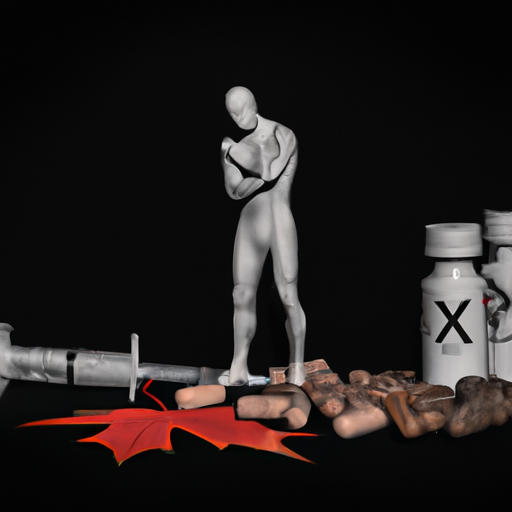The Canadian Opioid Crisis: A Call to Arms for Comprehensive Strategy
The rising tide of opioid addiction in Canada has reached a crescendo, with the opioid crisis reaching epidemic proportions and ripping through the fabric of society with no socio-economic barrier spared. It dominates the lives of many, sews hardship, and precipitates crime; a clear indication that we need swift and comprehensive strategies to combat this dire issue.
The Effects of the Opioid Crisis in Canada
An unfortunate incident of a man being critically injured in a shooting in North York is a stark reminder of the dark side of opioid crisis – escalating violence and crime rates. This distressing trend stretches far beyond individual victims, creating ripples that impact families, neighborhoods, and society as a whole. Far more than an issue of public health, the opioid crisis has emerged as a significant determinant of public safety.
Broad and Widespread Impacts
There are several detrimental effects of the opioid crisis noted in Canada which extend beyond health impacts such as:
- Increased criminal activities associated with securing opioids.
- High economic burden due to healthcare costs, lost productivity, addiction treatment, and criminal justice involvement.
- Rise in homelessness due to addiction-related unemployment and financial troubles.
Efforts to Combat the Opioid Crisis
As we embrace the stark reality of the endemic opioid crisis, there is an urgent call to arms for a coordinated, multi-sectoral response that addresses not just the supply, but also the demand and harm reduction. While several initiatives have been launched to combat the menace, they have been disjointed and inadequate.
Naloxone: A Step in the Right Direction
One such effort to combat opioid-related fatalities is the increased availability and use of Naloxone, a medication used to block the effects of opioids. While its distribution has been a step in the right direction, it does not address the root causes of the epidemic.
Opioid Substitution Treatment (OST)
An important focus has been on increasing access to opioid substitution treatments such as methadone and buprenorphine, which have proven efficacy in reducing risks of overdoses and illicit opioid use. However, more resources need to be allocated towards increasing access to comprehensive harm reduction services in addition to OST.
Opioid Class Action
There have also been measures on the legal front, such as the opioid class action lawsuit seeking damages from major drug manufacturers for alleged harms caused by overly aggressive marketing practices. Aside from the potential financial windfall, this lawsuit symbolizes an important recognition that drug manufacturers must also bear responsibility for the crisis. However, this too falls short of providing a comprehensive solution.
Conclusion: Comprehensive Strategy Needed
In conclusion, while various efforts have been initiated to combat the opioid crisis, they fall short of a comprehensive and unified solution. As Canada grapples with this critical issue, the urgency for a multi-faceted strategy that combines harm reduction, treatment, prevention and enforcement mechanisms cannot be overstated. Only then can we hope to effectively address the multifarious impact of the opioid crisis, from drug overdoses, to increasing crime, homelessness, and societal instability.
We must remember that we are not only dealing with an issue of drug addiction but a complex societal issue that requires collective effort. Our response should therefore be equally complex and diverse, taking into account all aspects of the crisis including public health, societal safety, and drug policy within a broader framework of social justice and human rights. Despite the challenges we face, the solution to our opioid crisis lies within our potential for understanding, compassion, and determined action.
